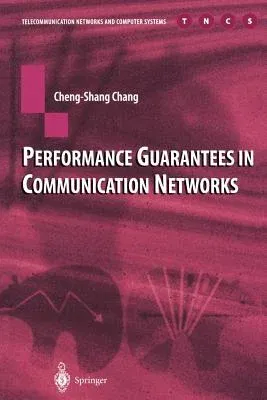Providing performance guarantees is one of the most important issues for
future telecommunication networks. This book describes theoretical
developments in performance guarantees for telecommunication networks
from the last decade. Written for the benefit of graduate students and
scientists interested in telecommunications-network performance this
book consists of two parts. The first introduces the recently-developed
filtering theory for providing deterministic (hard) guarantees, such as
bounded delay and queue length. The filtering theory is developed under
the min-plus algebra, where one replaces the usual addition with the min
operator and the usual multiplication with the addition operator. As in
the classical linear system theory, the filtering theory treats an
arrival process (or a departure process ) as a signal and a network
element as a system. Network elements, including traffic regulators and
servers, can be modelled as linear filters under the min-plus algebra,
and they can be joined by concatenation, "filter bank summation", and
feedback to form a composite network element. The problem of providing
deterministic guarantees is equivalent to finding the impulse response
of composite network elements. This section contains material on:
- (s, r)-calculus
- Filtering theory for deterministic traffic regulation, service
guarantees and networks with variable-length packets - Traffic
specification
- Networks with multiple inputs and outputs
- Constrained traffic regulation
The second part of the book addresses stochastic (soft) guarantees,
focusing mainly on tail distributions of queue lengths and packet loss
probabilities and contains material on: - (s(q), r(q))-calculus and q-envelope rates
- The large deviation principle
- The theory of effective bandwidth
The mathematical theory for stochastic guarantees is the theory of
effective bandwidth. Based on the large deviation principle, the theory
of effective bandwidth provides approximations for the bandwidths
required to meet stochastic guarantees for both short-range dependent
inputs and long-range dependent inputs.


